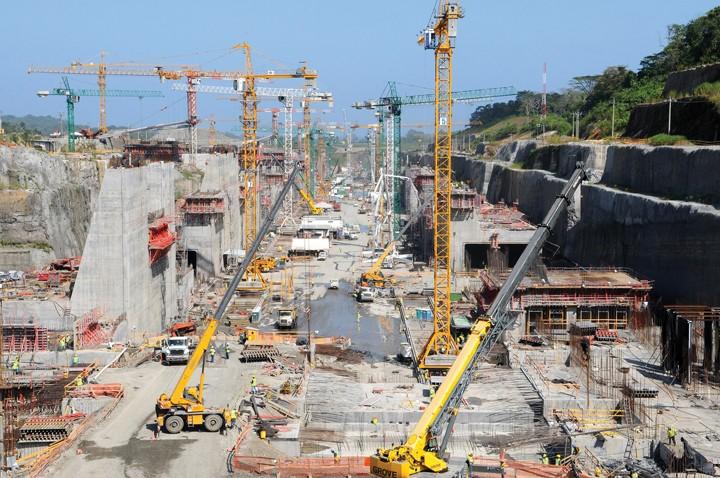GATUN, Panama — The Panama Canal’s expansion is finally beginning to look like a channel that will float some of the biggest ships in the world by mid-2015.
About 42 percent of the work on the new locks has been completed and it’s by far the most costly and complicated part of the $5.25 billion project to retrofit the nearly century-old canal with larger locks to lift and lower ships on both the Atlantic and Pacific sides of the isthmus. The old locks will still be in service but the new ones will allow the canal to handle so-called post-Panamax ships, which are too big to fit through the existing locks.
Most of the rest of the canal renovation, such as deepening and widening channels along the original route of the canal and construction of new access channels, is finished or nearly so. In early March, a milestone was reached when dredging of Culebra Cut, the narrowest part of the canal that straddles the Continental Divide, was completed.
But for Panama, which gets about $1 billion a year from the canal, the project needed to be done yesterday.
Maersk Line, the world’s largest container shipping line, has stopped using the Panama Canal for its Asia service to U.S. East Coast ports. Next week, it plans to resume Asian sailings to the Eastern Seaboard through the Suez Canal.
Because the Suez can accommodate post-Panamax vessels, Maersk officials say it’s more cost-effective. Maersk has not said whether it will run its Asia service through the Panama Canal once the expansion is completed.
Jorge Quijano, chief executive of the Panama Canal Authority, said he expects the new locks will help Panama bring “back home” some of the services that have switched to the Suez.
Work on the expansion is about eight months behind schedule, mainly because the international consortium working on the locks didn’t initially get the concrete mix right.
“We wanted a mix that could be guaranteed for the next 100 years,’’ said Jorge de la Guardia, executive director of the PCA’s locks project management division.
Heavy rain and a few strikes also have set the work back. But a new canal visitor’s center overlooking the Atlantic construction site and Gatun Lake opened right on schedule — Aug. 15, 2012, the 98th anniversary of the opening of the canal.
Long before anyone dreamed of a canal, this narrow isthmus in Panama was known as the “golden route” and was the pathway over which much of the gold from the New World was sent to Spain.
Later, during the California gold rush, miners crossed the isthmus to board ships heading up to California.
Now the gold comes from ship crossings. A container ship pays as much as $400,000 to traverse the canal. On a recent day eight ships were stacked up in Gatun Lake ready to enter the Atlantic locks as workers poured concrete at the excavation site.
Fees for using the new locks are still being worked out but it’s crucial that the canal authority get
them right so the canal will be able to compete with U.S. West Coast ports and the Suez Canal and to ensure that shipping lines will continue to send smaller ships through the original locks.









